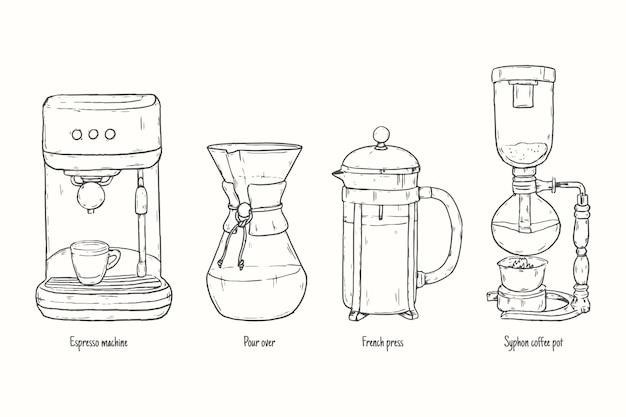Definitions of Gated Manual and Manual Transmissions
1․1․ Gated Manual Transmission
A gated manual transmission features a shifter with a gate system, requiring deliberate movements between gears, often used in racing for precision and to prevent accidental shifts․
1․2․ Manual Transmission

A manual transmission allows drivers to control gear shifts using a clutch pedal and shifter, offering direct control over the vehicle’s speed and torque delivery․
A gated manual transmission is a type of manual gearbox that features a unique shifter mechanism with a “gate” system․ This design requires the driver to guide the shifter through specific slots or gates to select each gear, often enhancing precision and preventing accidental shifts․ Typically found in high-performance or racing vehicles, gated manuals are prized for their tactile feedback and deliberate gear engagement․ They often involve a more mechanical and driver-focused experience, appealing to enthusiasts who value control and connection to the vehicle․ The gated system can be less common in modern cars, with some aftermarket kits available for enthusiasts seeking this traditional shifting style․
A manual transmission, also known as a stick shift, is a gearbox that requires the driver to manually change gears using a clutch pedal and a shift lever․ Unlike automated systems, manual transmissions rely on the driver’s skill to coordinate the clutch and accelerator for smooth acceleration and gear transitions․ This setup offers direct control over torque delivery, making it popular among driving enthusiasts․ Manual transmissions are typically lighter and more fuel-efficient than automatics, though they require more driver engagement․ They remain common in many global markets, particularly in Europe and Asia, where they are often preferred for their cost-effectiveness and driving involvement․ Despite declining popularity in some regions, manuals continue to be celebrated for their simplicity and driver connection․

History and Evolution of Gated Manual Transmissions
Gated manual transmissions originated from racing, featuring milled gates for precise shifts․ Modern kits, like those from Dapper Motorsports, offer exclusivity and customization, reviving this niche design․
2․1․ Origins of Gated Manual Transmissions
Gated manual transmissions trace their origins to racing, where precision and control were critical․ The design featured milled gates to guide the shifter, minimizing accidental shifts during high-speed maneuvers․
2․2․ Evolution Over Time
Gated manual transmissions evolved from early racing applications, where precise gear control was crucial․ Initially, they featured mechanical gates to prevent accidental shifts, enhancing driver accuracy at high speeds․
Over time, advancements in materials and engineering refined their design, improving durability and shift quality․ However, mass-market adoption remained limited due to complexity and cost․
In 2023, niche companies like Dapper Motorsports and Mazdashifters introduced limited-edition gated shifter kits, catering to enthusiasts seeking a vintage racing feel in modern vehicles․
Despite their rarity, gated manuals remain a sought-after modification for those prioritizing driving engagement and precision․

Design and Functionality Differences
Gated manuals feature a shifter with defined gates for precise gear selection, reducing accidental shifts, while standard manuals use a traditional H-pattern for broader accessibility and simplicity․
3․1․ Gated Manual Transmission Design
A gated manual transmission features a shifter with a metal plate that exposes the gear-shifting mechanism, requiring drivers to navigate through a “gate” system․ This design prevents accidental shifts, enhancing precision and control, especially in high-performance or racing scenarios․ The gated system often includes defined notches or detents for each gear, guiding the shifter into place․ Unlike standard manuals, gated manuals prioritize deliberate, precise shifting over ease of use, appealing to enthusiasts who value mechanical engagement․ Aftermarket kits, such as those from Dapper Motorsports, allow drivers to retrofit their vehicles with gated functionality․ This design emphasizes driver intention and mechanical interaction, making it a niche choice for specific driving contexts․
3․2․ Manual Transmission Design
A manual transmission, also known as a standard transmission, relies on a driver-operated clutch pedal and gearshift to select gears․ Its design includes a gearbox with gears, a clutch, and a manual shifter․ The clutch disengages the engine from the transmission, allowing the driver to shift gears using the shifter․ Unlike gated manuals, manual transmissions typically feature a simpler, more straightforward shift mechanism without the gate system․ This design makes it more accessible and easier to use for everyday driving․ The manual transmission is widely used in mainstream vehicles due to its balance of performance, fuel efficiency, and affordability․ It offers direct control over gear selection, making it a popular choice for drivers who enjoy an engaging driving experience without the complexity of a gated system․

Performance Aspects of Gated Manual vs Manual
Gated manual transmissions offer precise control and faster shifting, ideal for racing, while manual transmissions provide a balance of performance and everyday usability with less complexity․
4․1․ Speed and Acceleration
Gated manual transmissions are designed for rapid shifting, making them ideal for high-performance driving․ The precise gate system allows drivers to switch gears quickly and smoothly, reducing shift times and enhancing acceleration․ In racing scenarios, this precision can lead to faster lap times and better control over the vehicle’s speed․ Manual transmissions, while slightly slower in shifting compared to gated manuals, still offer excellent acceleration and responsiveness, especially when paired with modern clutch systems and optimized gear ratios․
For everyday driving, manual transmissions often provide a balance between speed and comfort, allowing drivers to maintain control while accelerating smoothly․ The direct connection to the engine enables quicker reactions to driving conditions, making manual transmissions a popular choice for both performance and practicality․
4․2․ Driver Control and Engagement
Gated manual transmissions offer heightened driver engagement through their precise, mechanical shifting mechanism․ The deliberate nature of shifting gears creates a more immersive driving experience, especially in high-performance or racing contexts․ Drivers feel a stronger connection to the vehicle, as each gear change requires intentional movement, enhancing control and responsiveness․
Manual transmissions also provide significant driver engagement by requiring active participation․ The use of the clutch pedal and shifter allows drivers to feel more connected to the car’s operation, offering a sense of mastery and satisfaction․ This hands-on approach is particularly appealing to driving enthusiasts who value the tactile experience and the ability to influence the vehicle’s behavior directly․

Market Presence and Availability

5․1․ Gated Manual Transmissions in Modern Cars
Gated manual transmissions are rare in modern production cars, primarily found in niche or high-performance vehicles, with limited mass-market availability due to complexity and cost․
5․2․ Manual Transmissions in Modern Cars
Manual transmissions remain available in many affordable and enthusiast-oriented vehicles, though their market share has declined with the rise of automatic and dual-clutch transmissions․
Gated manual transmissions are highly specialized and rare in modern vehicles, typically found in niche or high-performance cars․ Their limited availability stems from the complexity and cost of manufacturing such systems․ While some aftermarket companies, like Dapper Motorsports and Mazdashifters, offer gated shifter kits for enthusiasts, these are not mass-produced․ As of early 2023, such kits are priced around $600, with limited production runs, catering to a specific audience․ Gated manuals appeal primarily to driving purists and racing enthusiasts who value precise gear control․ However, their exclusivity and higher maintenance requirements make them unlikely to appear in mass-market vehicles․ This exclusivity ensures gated manuals remain a niche product, cherished by a dedicated community․
Manual transmissions remain popular in modern cars, especially among driving enthusiasts․ They are widely available across various vehicle segments, from economy cars to high-performance models․ Unlike gated manuals, standard manual transmissions are cost-effective and more accessible․ Many drivers appreciate the tactile connection and control they offer․ In regions like Europe and the UK, manuals dominate the market due to their fuel efficiency and lower purchase costs․ However, in countries like the US, automatics are more prevalent․ Despite this, manual transmissions continue to be celebrated for their simplicity, reliability, and driver engagement․ They are also often preferred in sports cars, where the direct control enhances the driving experience․ This enduring appeal ensures manual transmissions remain a staple in automotive options․
Drivers often choose between gated manual and manual transmissions based on personal preference and driving style․ Enthusiasts favor gated manuals for precision, while others prefer the simplicity of traditional manuals․ The tactile feedback and control offered by both enhance the driving experience, making each option appealing to different audiences․ The choice ultimately depends on whether the driver prioritizes performance accuracy or everyday practicality․ Both transmissions foster a strong connection between the driver and the vehicle, which is a key factor in their enduring popularity․ This personalization ensures that each transmission type remains relevant in the automotive world․ The driving experience is deeply influenced by these preferences, shaping how drivers interact with their cars on the road․ The emotional engagement and satisfaction derived from each transmission further solidify their places in the market․ By catering to distinct needs, both gated manual and manual transmissions continue to attract loyal followings․ The debate between the two often highlights the diverse priorities of modern drivers․ Whether for sporty handling or daily commuting, each transmission delivers a unique experience that resonates with its users․ This diversity ensures that both options remain viable choices in the ever-evolving automotive landscape․ The preference between gated manual and manual transmissions underscores the importance of personalization in driving experiences․ As automotive technology advances, the appeal of these transmissions endures, offering drivers a choice that aligns with their lifestyle and driving goals․ The lasting popularity of both options reflects the balance between innovation and tradition in the automotive industry․ By understanding user preferences, manufacturers can continue to refine and offer transmissions that meet the evolving needs of drivers worldwide; The driving experience remains at the heart of these choices, ensuring that both gated manual and manual transmissions hold a special place in the hearts of car enthusiasts․ The future of these transmissions lies in their ability to adapt while retaining the qualities that make them unique and cherished by their users․ The ongoing debate between gated manual and manual transmissions serves as a testament to the passion and dedication of driving enthusiasts․ By embracing this diversity, the automotive community continues to thrive, offering a wide range of options for every kind of driver․ The enduring appeal of both transmissions highlights the significance of driver engagement and the joy of driving in its purest form․ As technology progresses, the essence of these transmissions remains intact, ensuring their relevance for years to come․ The story of gated manual and manual transmissions is one of tradition, innovation, and the unrelenting pursuit of the perfect driving experience․ It is a narrative that continues to unfold, shaped by the ever-changing landscape of the automotive world․ The legacy of these transmissions is built on the foundation of driver satisfaction and the timeless love for the art of driving․ In a world increasingly dominated by automation, the manual and gated manual transmissions stand as symbols of the human connection to the machine․ They remind us that driving is not just about reaching a destination but about the journey itself․ The passion for these transmissions is a celebration of the driving spirit, a testament to the enduring bond between driver and car․ As the automotive industry evolves, the appreciation for manual and gated manual transmissions endures, ensuring their place in the hearts of enthusiasts and the history of motoring․ The debate between these two options may never be fully resolved, but it is this very diversity that enriches the automotive experience․ Each transmission type brings its own charm and benefits, catering to the varied preferences of drivers worldwide․ The choice between gated manual and manual is more than just a decision; it is a reflection of one’s driving philosophy and the desired connection with the vehicle․ In this sense, both transmissions coexist as equals, each offering a unique experience that enhances the joy of driving․ The future of manual and gated manual transmissions is secure, as they continue to be celebrated for their distinct qualities and the driving satisfaction they provide․ The automotive community’s love affair with these transmissions shows no signs of fading, as they remain integral to the driving experience․ The story of manual and gated manual transmissions is a story of passion, innovation, and the relentless pursuit of driving perfection․ It is a chapter in automotive history that continues to be written, driven by the dedication of enthusiasts and the enduring appeal of these iconic transmissions․ The legacy lives on, inspiring future generations of drivers and car enthusiasts to embrace the art of shifting gears․ In a world where technology often seeks to simplify and automate, the manual and gated manual transmissions remind us of the beauty in complexity and the satisfaction of hands-on control․ They are more than just components of a car; they are gateways to a more immersive and rewarding driving experience․ The preference for these transmissions is a testament to the diversity of the automotive world and the varied tastes of its participants․ Whether for sporty adventures or daily commutes, both options deliver unique benefits that keep drivers coming back for more․ The enduring popularity of manual and gated manual transmissions is a celebration of the driving spirit, ensuring that the art of shifting gears remains alive and well in the modern era․ As the automotive industry advances, these transmissions adapt, blending tradition with innovation to meet the needs of contemporary drivers․ The result is a harmonious balance between past and present, offering a driving experience that resonates with both nostalgic and forward-thinking motorists․ The story of manual and gated manual transmissions is far from over, with each chapter revealing new possibilities and reinforcing their timeless appeal․ In the ever-changing automotive landscape, these transmissions stand as beacons of tradition and driver engagement, connecting the past to the future․ The love for manual and gated manual transmissions is a shared passion that transcends generations, uniting drivers in their appreciation for the art of driving․ It is this unity that ensures the continued relevance and desirability of these iconic components, as they evolve to meet the demands of modern motoring; The journey of manual and gated manual transmissions is a testament to the enduring spirit of automotive enthusiasts, who cherish the connection between driver and machine․ As technology progresses, these transmissions remain a vital part of the driving experience, offering a tangible link to the rich history of motoring․ The debate between manual and gated manual transmissions may never be settled, but it is this very debate that fuels the passion and innovation within the automotive community․ Each transmission type has its own strengths and weaknesses, but together, they contribute to the rich tapestry of driving experiences available to enthusiasts․ The choice between them is a personal one, reflecting the unique preferences and needs of each driver․ Whether for the track or the highway, both transmissions deliver unparalleled driver engagement, making every journey a memorable one․ The legacy of manual and gated manual transmissions is a story of tradition, innovation, and the unwavering dedication of car enthusiasts․ It is a narrative that continues to inspire and evolve, ensuring that the art of driving remains a cherished experience for generations to come․ In a world where automation is increasingly prevalent, the manual and gated manual transmissions stand as symbols of the human touch in motoring, reminding us that driving is about more than just transportation—it’s about the connection to the road and the machine․ The enduring popularity of these transmissions is a testament to the power of tradition and the timeless appeal of hands-on control․ As the automotive industry moves forward, the appreciation for manual and gated manual transmissions endures, ensuring their place in the hearts of drivers and the history of cars․ The story of these transmissions is one of passion, innovation, and the relentless pursuit of excellence, a story that will continue to unfold as long as there are those who cherish the art of driving․ In the end, whether one prefers a gated manual or a traditional manual transmission, the love for these components is a shared passion that unites car enthusiasts worldwide, creating a community bound by the joy of the drive․ The future of manual and gated manual transmissions is bright, as they continue to be celebrated for their unique qualities and the driving satisfaction they provide․ The automotive community’s love affair with these transmissions shows no signs of fading, as they remain integral to the driving experience․ The story of manual and gated manual transmissions is a story of passion, innovation, and the relentless pursuit of driving perfection․ It is a chapter in automotive history that continues to be written, driven by the dedication of enthusiasts and the enduring appeal of these iconic transmissions․ The legacy lives on, inspiring future generations of drivers and car enthusiasts to embrace the art of shifting gears․ In a world where technology often seeks to simplify and automate, the manual and gated manual transmissions remind us of the beauty in complexity and the satisfaction of hands-on control․ They are more than just components of a car; they are gateways to a more immersive and rewarding driving experience; The preference for these transmissions is a testament to the diversity of the automotive world and the varied tastes of its participants․ Whether for sporty adventures or daily commutes, both options deliver unique benefits that keep drivers coming back for more․ The enduring popularity of manual and gated manual transmissions is a celebration of the driving spirit, ensuring that the art of shifting gears remains alive and well in the modern era․ As the automotive industry advances, these transmissions adapt, blending tradition with innovation to meet the needs of contemporary drivers․ The result is a harmonious balance between past and present, offering a driving experience that resonates with both nostalgic and forward-thinking motorists․ The story of manual and gated manual transmissions is far from over, with each chapter revealing new possibilities and reinforcing their timeless appeal․ In the ever-changing automotive landscape, these transmissions stand as beacons of tradition and driver engagement, connecting the past to the future․ The love for manual and gated manual transmissions is a shared passion that transcends generations, uniting drivers in their appreciation for the art of driving․ It is this unity that ensures the continued relevance and desirability of these iconic components, as they evolve to meet the demands of modern motoring․ The journey of manual and gated manual transmissions is a testament to the enduring spirit of automotive enthusiasts, who cherish the connection between driver and machine․ As technology progresses, these transmissions remain a vital part of the driving experience, offering a tangible link to the rich history of motoring․ The debate between manual and gated manual transmissions may never be settled, but it is this very debate that fuels the passion and innovation within the Drivers who prefer gated manual transmissions often praise their precision and control, especially in high-performance scenarios․ The defined “gates” between gears prevent accidental shifts, offering a sense of security during aggressive driving․ Many enthusiasts appreciate the mechanical feel and the deliberate nature of each gear change, which enhances the driving experience․ However, some users find the gated design less practical for everyday driving, as it requires more intentional shifts compared to a standard manual․ The feedback highlights a trade-off between performance accuracy and daily convenience, with gated manuals appealing primarily to driving purists and racing enthusiasts․ Despite this, the unique tactile engagement and exclusivity of gated manuals make them a cherished option for those who value precision and craftsmanship․ Manual transmissions are widely praised for their simplicity and direct driver engagement․ Many drivers appreciate the control they have over gear changes, which enhances the driving experience and connection to the car․ The tactile feel of the clutch and shifter is often highlighted as a key feature, providing a sense of mechanical interaction that many enthusiasts enjoy․ Additionally, manual transmissions are typically more affordable and fuel-efficient compared to automatics․ However, some users find the constant need to use the clutch and shift gears in heavy traffic or urban settings to be tiring․ Others appreciate the skill and involvement required, making it a preferred choice for those who value a more interactive driving experience․ Gated manuals offer precision and control, ideal for racing, but can be complex and less accessible to novice drivers․ Their design prevents accidental shifts, enhancing safety․ Manual transmissions provide direct engagement and cost-effectiveness but require constant driver involvement, which can be tiring in traffic․ They balance simplicity with a rewarding driving experience․ Gated manual transmissions offer precision and control, ideal for racing, by preventing accidental shifts․ Their design ensures deliberate gear changes, enhancing safety and performance․ Manual transmissions require more driver engagement and effort, as constant use of the clutch and gearshift can be tiring in heavy traffic․ They also involve a learning curve for new drivers to master smooth shifting․ Additionally, manual transmissions are less common in modern vehicles, particularly in high-performance or luxury segments, where automatic or dual-clutch options dominate․ This limited availability can make manual transmissions less accessible to some buyers․ Furthermore, the need for manual operation can be less convenient for drivers who prioritize ease and comfort during their daily commute․ The comparison between gated manual and manual transmissions reveals distinct characteristics tailored to different driving preferences and needs․ Gated manuals offer precision and exclusivity, often sought by enthusiasts and in high-performance scenarios․ Regular manual transmissions provide a balance of control, cost-efficiency, and driving engagement, making them popular among everyday drivers․ While both options cater to specific niches, the decline in manual transmission vehicles in modern markets suggests a shift toward automatics for convenience․ However, the enduring appeal of manuals, both standard and gated, ensures they remain relevant for those who value the tactile connection to their vehicle․
User Preferences and Driving Experience

6․1․ Gated Manual Transmission Feedback
6․2․ Manual Transmission Feedback

Pros and Cons of Each Transmission Type
7․1․ Advantages of Gated Manual Transmissions
7․2․ Disadvantages of Manual Transmissions



